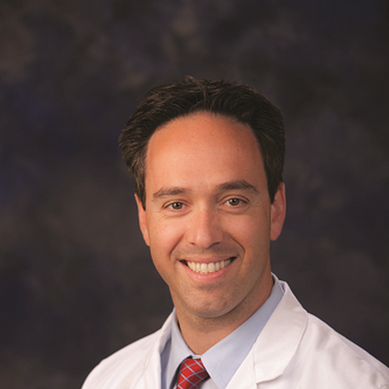Saying goodbye to GERD
New TIF® procedure is a game changer
Gastroesophageal reflux disease (GERD) was making Annie Nathenson’s life miserable.

“He said it was time for me to go on a proton pump inhibitor (PPI),” she continues, referring to a medication that’s often the first line of treatment for GERD. “I took it for a couple of years and did fine. Then it suddenly stopped working and I started having difficulty swallowing, I was feeling pressure in my chest, food wasn’t tasting good anymore and I was having a lot of reflux and heartburn. I even had to leave a restaurant once because I was choking.”
In fact, her symptoms got so bad that Nathenson ended up in the emergency room with chest pain, thinking she was having a heart attack.
In cases of refractory GERD (when the condition doesn’t respond to medication or lifestyle changes), a surgical procedure called Nissen fundoplication has long been the gold standard treatment. In this procedure, which is usually performed laparoscopically, the surgeon wraps the top of the stomach completely around the lower esophagus, strengthening the lower esophageal sphincter (LES), the valve that prevents acid from backing up into the esophagus.
When Dr. Conti discussed the Nissen fundoplication with Nathenson, her reaction was, “I really didn’t want any scars on my body,” she says. She also was put off by potential side effects that include dysphagia (difficulty swallowing), increased bloating and flatulence, and inability to belch or vomit.
Then he told her about a newer minimally invasive procedure called transoral incisionless fundoplication (TIF®).
TIF eliminates the need for cutting stomach tissue by accessing the LES through the mouth using a flexible, camera-equipped, single-use device. The device enables the physician to gently pull the esophagus down and wrap the top of the stomach partially around it — without a single incision. Plastic fasteners hold the tissue in place; the body heals around these fasteners. The operation is performed under general anesthesia and most patients go home the same day.

What’s more, he notes, studies have shown that as many as 90 percent of patients who undergo TIF can eventually stop taking PPIs. Others can control symptoms with smaller doses.
“This is important because one of the concerning side effects of long-term PPI use is that it decreases the ability to absorb calcium and vitamin D, contributing to osteopenia and osteoporosis and increasing the risk of bone fractures,” Dr. Conti notes. Studies also suggest that people taking PPIs have a higher risk of developing Clostridium difficile (C.diff) infections which cause diarrhea and colitis (inflammation of the colon).
Left untreated, however, GERD can lead to other serious health issues.
“About five percent of people with GERD develop Barrett’s esophagus,” Dr. Conti says, referring to a condition in which the lining of the esophagus becomes damaged by acid reflux, triggering cellular changes. “About five percent of these patients can develop esophageal cancer.
“Another group of people with GERD have a more complicated version of reflux called laryngopharyngeal reflux, or LPR,” he continues. “In these cases, the stomach acid leaves the esophagus and goes into the throat, even the nasal cavity. This can trigger a variety of symptoms including refractory asthma, sinusitis, and chronic cough and, in rare cases, pulmonary fibrosis (scarring of lung tissue).
“TIF offers a solution for these issues,” Dr. Conti says.
TIF also can be performed in patients who have small (under 3 cm) hiatal hernias. A procedure called CTIF combines the transoral incisionless fundoplication, which Dr. Conti performs, with laparoscopic hernia repair, which is performed by a surgeon. “We’re using this combination approach in most of the procedures we do these days,” Dr. Conti notes.
Who’s a candidate for TIF or CTIF?
“Patient selection is key to a successful outcome,” Dr. Conti says. “The ideal candidate is fundamentally healthy, with good heart and lung function, and has true acid reflux. We do extensive preoperative testing to ensure that the procedure is appropriate for each patient.”
This testing includes endoscopy, esophageal acid exposure testing, and an esophageal motility study which evaluates the movement of food through the esophagus. Importantly, the TIF and CTIF procedures are covered by Medicare and most private insurance plans.
“The biggest thing I hear from patients who’ve undergone TIF or CTIF is that they wish they would have done it sooner,” he says. “They didn’t realize just how much GERD had affected their quality of life. After surgery, they feel as if their equilibrium has been restored; they’re able to do activities they weren’t able to do before.”
“It’s been a gamechanger for me,” affirms Nathenson, who underwent TIF in February of 2020. She admits that the first week or so after her procedure was challenging. “It was hard to swallow because my throat hurt,” she says. “But now I have no more GERD. I still have to watch what I eat, and I’ll occasionally have to take a Pepcid® if I have red sauce or spicy chili. But I’ve been able to resume all my activities and enjoy them again.
“TIF really worked wonders for me,” she adds. “I’m so glad I had it done.”
For more information, call 760.773.2882, or visit EisenhowerHealth.org/GI.
Podcasts are available online.



